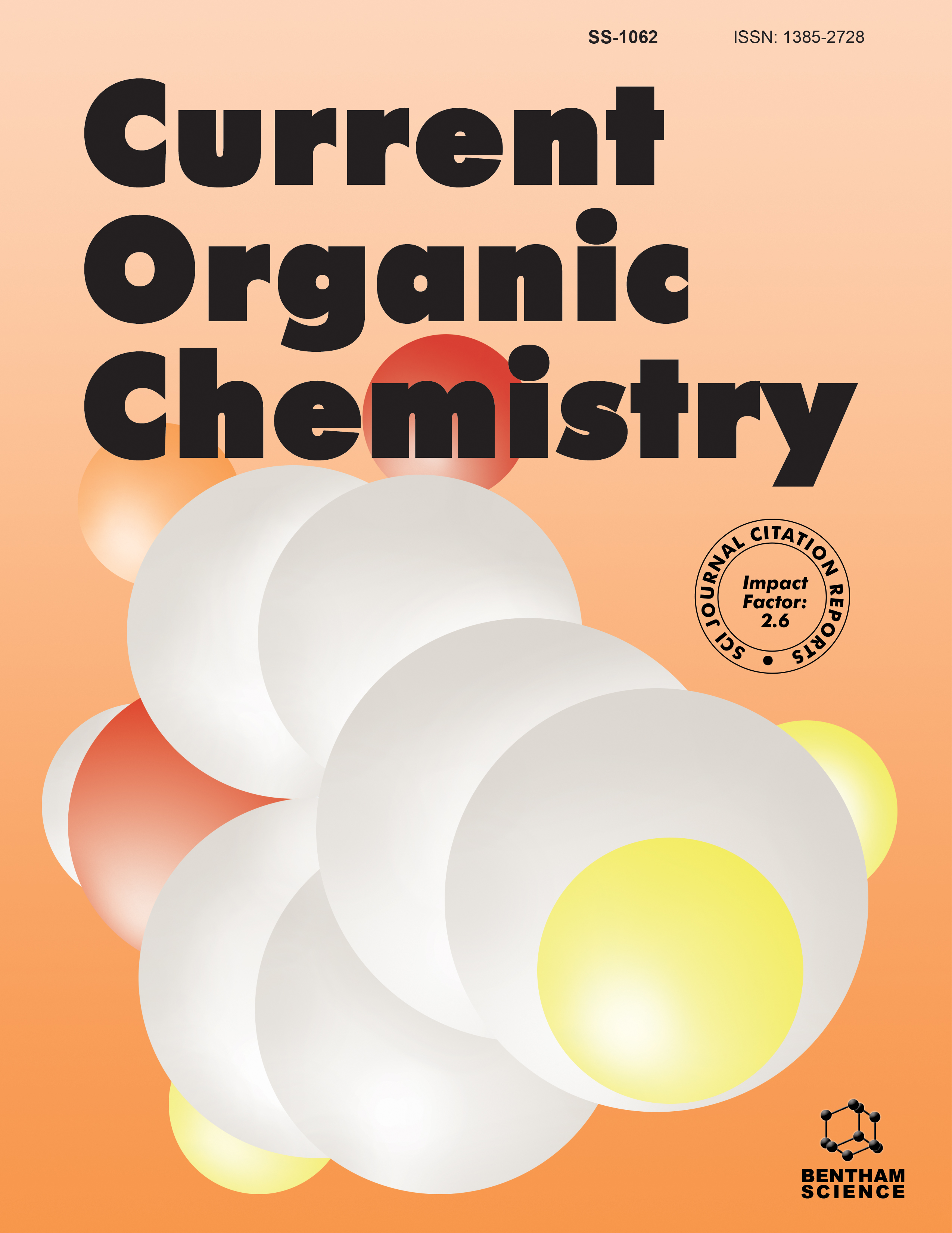- Home
- A-Z Publications
- Current Organic Chemistry
- Previous Issues
- Volume 13, Issue 18, 2009
Current Organic Chemistry - Volume 13, Issue 18, 2009
Volume 13, Issue 18, 2009
-
-
Editorial [Hot topic: Multicomponent Reaction (Guest Editor: Song Cao)]
More LessBy Song CaoAfter nearly 20 years of extensive study and rapid development, multicomponent reactions have already been an commonly used and powerful tool for the construction of novel and complex target molecules. Up to now, numerous literatures on the development of novel MCRs have been reported and several reviews have summarized the progress on MCRs before the end of 2005 thoroughly. Recently, with the developme Read More
-
-
-
Copper-Catalyzed Multicomponent Reactions: Securing a Catalytic Route to Ketenimine Intermediates and their Reactivities
More LessAuthors: Eun J. Yoo and Sukbok ChangA new type of Cu-catalyzed multicomponent reaction has been developed relying on the in situ generation of N-sulfonyl- or N-phosphorylketenimine intermediates, which are obtained from the cycloaddition of 1-alkynes and sulfonyl- or phosphoryl azides followed by ring-opening rearrangement of the initially formed copper triazole species. This facile and versatile route to ketenimines has led to develop a range of highly efficient Read More
-
-
-
Multi-component Heterocycle Syntheses via Catalytic Generation of Alkynones
More LessAuthors: Benjamin Willy and Thomas J. J. MullerAlkynones are versatile three-carbon building blocks in heterocyclic chemistry. They are easily and efficiently prepared by a modified Sonogashira coupling of acid chlorides and terminal alkynes. As a consequence of the mild reaction conditions the stage is set for new diversity-oriented routes to heterocycles by sequential and consecutive transformations. Hence, isoxazoles, indolizines, pyrazoles, pyridimines, 1,5-benzoheteroa Read More
-
-
-
Multicomponent Reactions Based on Fluoro-Containing Building Blocks
More LessAuthors: Jingjing Wu and Song CaoFluorinated compounds play a unique role in the development of novel lead compounds in both medicinal chemistry and modern crop protection. The introduction of fluorine atom always produces significant changes in the physical properties and often improves the biological activity of target moleculars. Multicomponent reactions (MCRs) are becoming a vastly more powerful tool for the creation of molecule libraries due to the Read More
-
-
-
Multicomponent Reactions Catalyzed by Lanthanides
More LessAuthors: Pawan J. Tambade, Yogesh P. Patil and Bhalchandra M. BhanageThis review covers some important developments in the field of multicomponent reactions catalyzed by lanthanides. Various aspects of well known multicomponent reactions such as Biginelli, Hantzsch synthesis, Ugi reaction, Mannich reaction, Povarov reaction, Kabachnik-Fields reaction and other reactions catalyzed by various lanthanides, role of catalyst, its recyclability, and reaction conditions were discussed in detail.
-
-
-
Multi-Component Reactions in Water
More LessAuthors: Kandhasamy Kumaravel and Gnanasambandam VasukiMulti-component reactions (MCR) performed in water or aqueous medium are surveyed in this review. Several named and new MCR which are mechanistically different have been successfully performed in water or aqueous medium creating diverse molecular skeletons. This protocol couples the benefits of MCR with that of water as solvent for organic transformations, thus facilitating efficient chemical production in e Read More
-
-
-
Synthesis of Some Purine Nucleoside Derivatives with Expected Biological Activity
More LessAuthors: A. F. El-Farargy and Amira A. GhoneimThe considerable biological and medicinal activities of purine nucleoside derivatives have simulated the recent interest in the synthesis of some new purine nucleosides. The present work described the reaction of inosine (1) with triphenylphosphine which led to the formation of 5'-chloro-5'-deoxy inosine (2), which on reaction with methylamine and morphorine afforded the compounds (3) and (4) respectively. The benzoylati Read More
-
-
-
Synthesis of Tetrahydropyrimidine Derivatives and its Glycosides
More LessEthyl-4-thienyl-6-phenyl-2-oxo-1,2,3,4-tetrahydropyrimidine carboxyl ate (4) was obtained by the reaction of thiophene-2-carbaldehyde, urea and ethylbenzoylacetate. Reaction of (4) with phosphorous oxy chloride followed by hydrazine hydrate afforded the hydrazide (6), condensation of (6) with D-glucose followed by acetylation gave the acetylated compound (8), which cyclized into triazolopyrimidine derivatives (9) in presen Read More
-
Volumes & issues
-
Volume 29 (2025)
-
Volume 28 (2024)
-
Volume 27 (2023)
-
Volume 26 (2022)
-
Volume 25 (2021)
-
Volume 24 (2020)
-
Volume 23 (2019)
-
Volume 22 (2018)
-
Volume 21 (2017)
-
Volume 20 (2016)
-
Volume 19 (2015)
-
Volume 18 (2014)
-
Volume 17 (2013)
-
Volume 16 (2012)
-
Volume 15 (2011)
-
Volume 14 (2010)
-
Volume 13 (2009)
-
Volume 12 (2008)
-
Volume 11 (2007)
-
Volume 10 (2006)
-
Volume 9 (2005)
-
Volume 8 (2004)
-
Volume 7 (2003)
-
Volume 6 (2002)
-
Volume 5 (2001)
-
Volume 4 (2000)
Most Read This Month
Article
content/journals/coc
Journal
10
5
false
en


